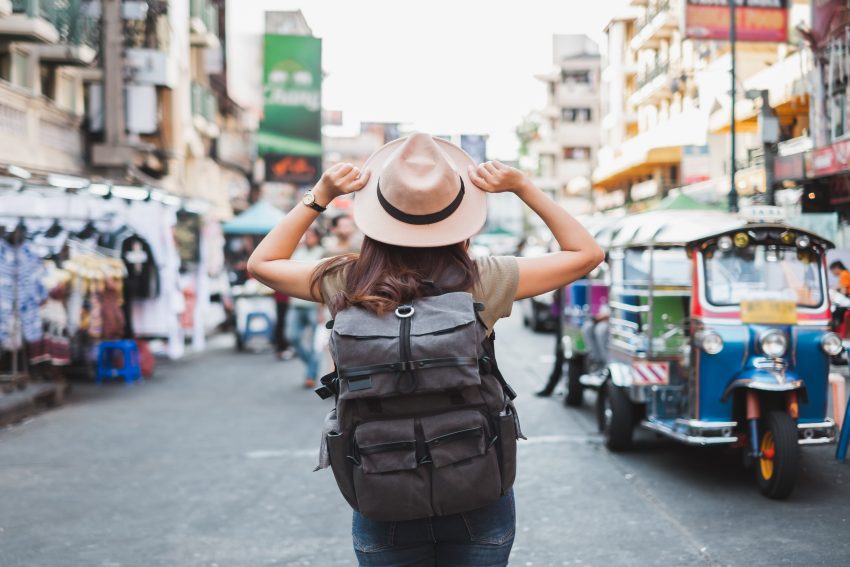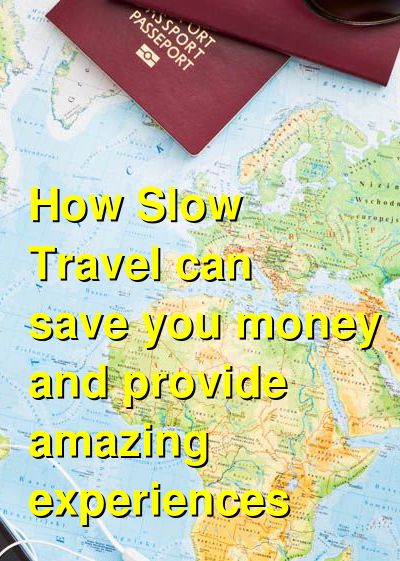How Slow Travel can save you money and provide amazing experiences
Perhaps you've heard the term "slow travel" before, as it's been a popular trend among budget travelers and international backpackers for awhile now. Or, maybe you haven't, in which case an overview is in order (we'll get to that). Either way, this topic is definitely worth revisiting because not only can the concept of traveling slowly save you money, but it can also lead to some absolutely amazing travel and cultural experiences during your next trip.
What is "Slow Travel"?
Essentially, this is the idea that you should move between destinations less frequently - while also utilizing public ground transportation for those times that you do move around. By spending more time in less places, you can really get to know a destination and its people. And by using buses and trains instead of flights, you can understand more about how the locals live and work, and perhaps even strike up a conversation during the longer ride.
Slow travel lets you really dig in and dive deep into a place and a culture. While many travelers want to take a whirlwind tour of a region, slow travelers pick only one or two places. For example, it's quite common to hear about a young couple taking a 2-week trip to Europe. In that amount of time, it's possible to visit anywhere from 8 to 10 major cities in Europe. Yes, you'd see the Eiffel Tower, the canals of Venice, and all of the famous cathedrals - but would you really get to know any of those cities? On the other hand, the idea of slow travel would dictate that you spend the entire two weeks in just one or two cities.

The Benefits of Slow Travel
The Cultural Experiences: We've just hinted at one of the major benefits of traveling slow - full cultural immersion. Imagine a full week in Paris or another major city anywhere else in the world. After getting to see the major tourist sights in a day or two, you could then really dive into the local culture, the eclectic neighborhoods, the quaint cafes, and the restaurants where the locals eat. A traveler could live in almost any city in the world for a week or two and have these amazing experiences that would not exist if you simply blew through a city in a day or two. While it might not be for everyone, those that immerse themselves in a place for a much longer period of time come out with a renewed appreciation of how people on the other side of the world actually live.
The lower cost is one of the best benefits of slow travel. Moving around from place to place can quickly add to your travel budget. Flights, buses, trains, and ferries are not cheap. Buying a new ticket every two days can quickly add a large sum to your travel expenses. While you'll usually spend the same amount on accommodation if you move fast or slow, the added expenses of transportation can really add up. Local transportation might also add to your budget, too. If you're moving quickly, you feel a need to see every major sight in a city in a day or two. This means that you'll quite literally run around the entire city while spending money on the subway, buses, or taxi rides. On the other hand, if you stay in a city longer, you can take the time to maximize the public transportation system. Many cities have discounts if you buy multi-day tickets. Or, you can take the time to walk at a slower pace through the city on your daily sightseeing tours. And as an added benefit, these longer walks will help you get to know the place better. Remember what we said about cultural experiences? Moving slowly helps you to have better experiences, not just cheaper experiences.
New friends are another benefit of traveling slowly. Depending on where you stay and how you travel, perhaps you can spend some time getting to know some locals or even other travelers. Hostels are great places to meet up with other guests, as are B&B's and guest houses. Spend some time in the morning chatting over breakfast with your fellow guests, and by the end of the week you'll have made some valuable connections. Or why not spend time at a nearby cafe, restaurant, pub, or bar getting to know some locals? While this might not work out in every city, many places around the world do actually have a "cafe culture" where the locals meet and talk.
But, How?
Let's get practical, how do we do this? Taking local buses and trains is one of the first steps, along with planning your overall itinerary to visit less destinations during a longer period of time. We've put together a guide to finding the most affordable train and bus tickets in each region of the world.
Generally speaking, flights are the most expensive way to travel, and then trains, and then buses. Trains and buses can also vary by cost as many regions have high-speed long distance trains along with local, slower trains. If it's practical and possible, the local trains might be slower, but they are also usually cheaper and provide a better opportunity to chat with other passengers.
The same if true of buses. Long distance buses tend to move along the highways getting you somewhere faster, while the local (often government-run) buses stop more often and cater to the local populations.

The Downside of Slow Travel
While it might sound like we're claiming "slow travel" is the ultimate answer to everything in the travel universe, it's not. Like anything in life, we need to look at both sides of the issue. Indeed there are some negatives to this travel approach.
The level of luxury that you desire on a trip might not exist for the type of transportation that we're suggesting. If you need or want to be more comfortable, then trains and buses are not always the most relaxing and luxurious method of transportation. While trains and buses in Europe and other developed countries are often very clean, smooth, and comfortable, in developing countries they can be a little rough around the edges. But in our experience, that's what makes them awesome! It's just not for everyone, sometimes. I remember the time when the woman in the seat next to me was holding a chicken… (I thought it was fantastic, but you might not.)
You also could feel like you're visiting less destinations. Many people don't have as much vacation time as others, and they want to take full advantage of their time off. Thus, they want to go on a "whirlwind tour" to see the major sights while they can. There's nothing wrong with this, as all of those bucket list items are on your bucket list for a reason: they're amazing. Sometimes we need to balance out the need to see more stuff with the need to travel slower. Every trip can be different, and there's no wrong answer.
It's entirely possible to balance the desires to see more things, travel in more luxury, and also incorporate some aspects of "slow travel" all at the same time. It's not one or the other, after all, but more of a sliding scale. Find what's best for you.
Contents
Itinerary Planning
Planning a Route
The Travel Planning Process
Estimating Travel Costs
How To Save Money for Travel
Visa & Passport Issues
Travel Safety and Health
Vaccinations for Travel
Food Safety While Traveling
Travel Insurance / Health Insurance
Why Travelers Need a VPN
eSIM Mobile Internet
Guidebooks
Around the World Trip Planning
Around the World Trip Costs
Accessing Money While Traveling
RTW Plane Tickets
RTW Packing Lists
Money Belts
Leaving Your Life Behind
Traveler's To Do List for a RTW Trip
Slow Travel Can Save Money
Cheap Bus & Train Tickets
Cheap Accommodation
Hostels are Awesome
Cheap Flights
Budget Your Trip
 Budget Your Trip is all about finding out how much everything costs so that you can travel cheaper and longer. With average daily travel costs that are calculated from the budgets of real travelers, you can find out how much money you need to plan your next adventure. On this website you can also find travel advice, tour information, accommodation reviews, and activity suggestions for thousands of destinations around the world.
Budget Your Trip is all about finding out how much everything costs so that you can travel cheaper and longer. With average daily travel costs that are calculated from the budgets of real travelers, you can find out how much money you need to plan your next adventure. On this website you can also find travel advice, tour information, accommodation reviews, and activity suggestions for thousands of destinations around the world.
Pin This Page

Some of the links on this website are sponsored or affiliate links which help to financially support this site. By clicking the link and making a purchase, we may receive a small commission, but this does not affect the price of your purchase.